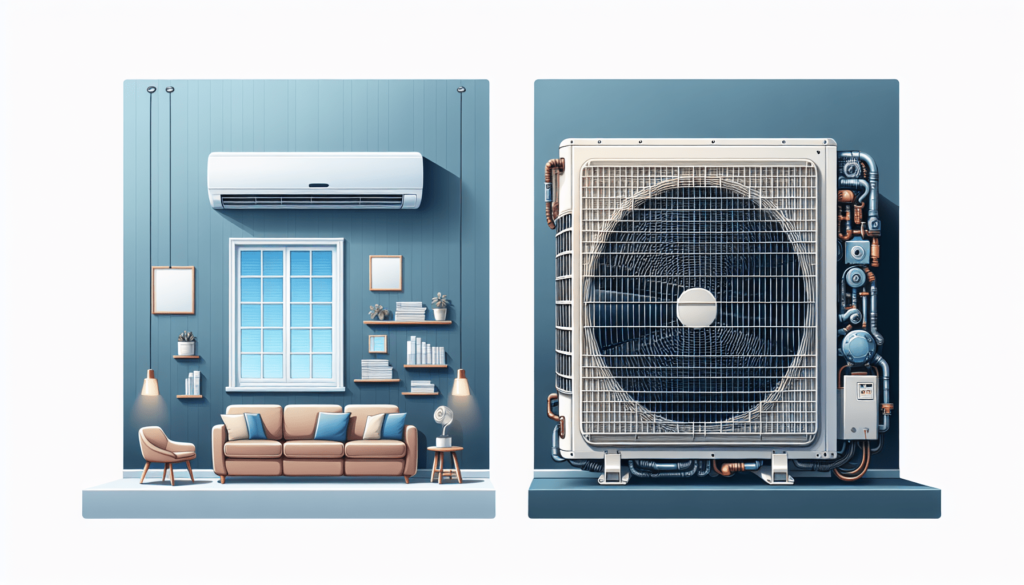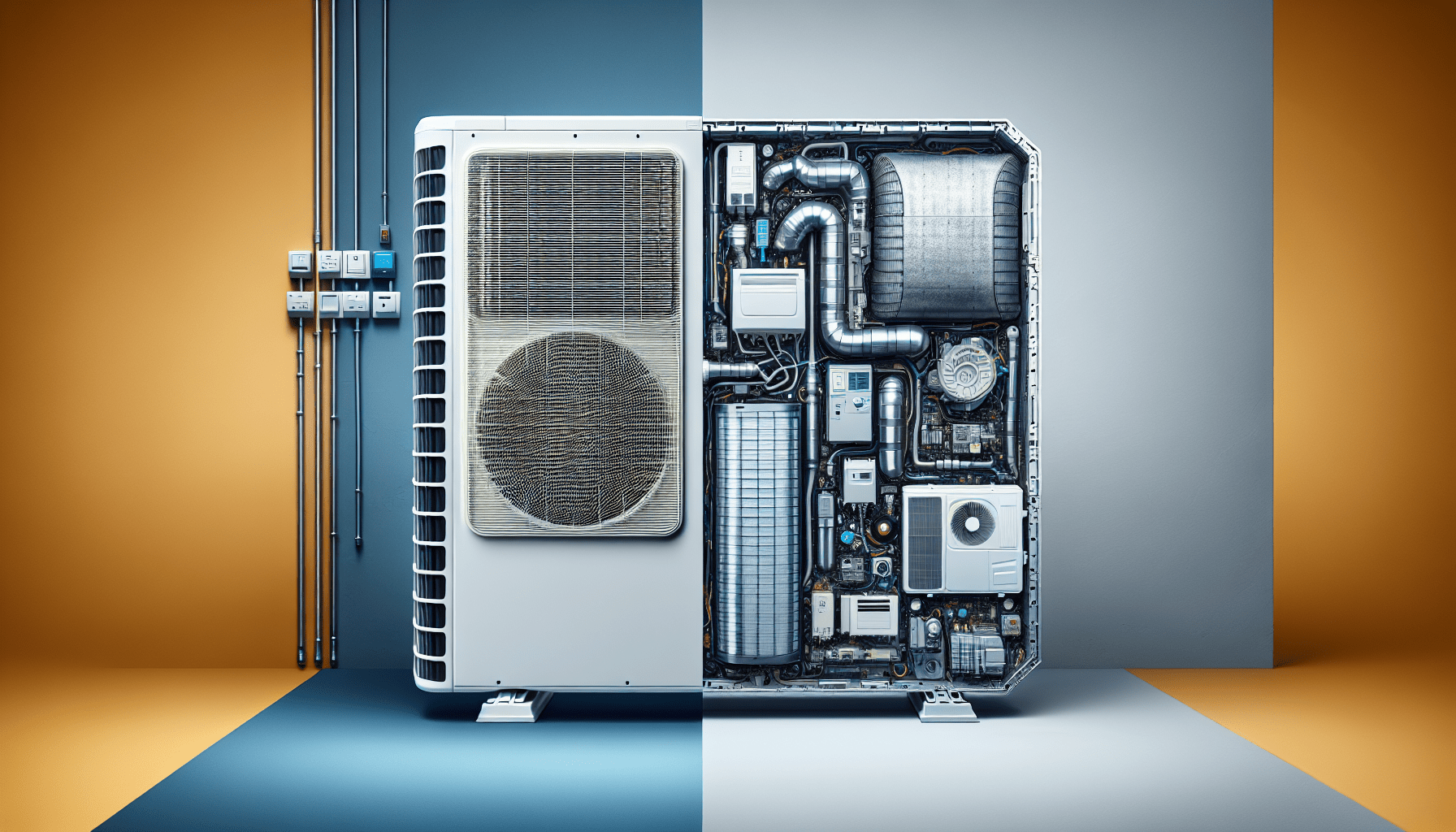Welcome to an eye-opening article that explores the unique features that set ductless mini split ACs apart from traditional HVAC systems. In this informative piece, you will discover the many benefits of choosing a ductless mini split system, such as increased energy efficiency, customizable room-by-room temperature control, and easy installation. Say goodbye to bulky ductwork and hello to a more convenient and cost-effective cooling solution for your home or office. Get ready to learn why ductless mini split ACs are becoming increasingly popular and how they can make a difference in your comfort and savings. Have you ever wondered about the differences between ductless mini split ACs and traditional HVAC systems? If so, you’ve come to the right place! In this article, we’ll explore the unique features and benefits of ductless mini split ACs and how they set them apart from traditional HVAC systems.
Understanding Ductless Mini Split ACs
Ductless mini split AC systems are becoming increasingly popular for their energy efficiency, versatility, and ease of installation. Unlike traditional HVAC systems, which rely on ductwork to distribute air throughout a home or building, ductless mini split ACs operate without the need for ducts. Instead, they consist of an outdoor unit connected to one or more indoor units via a system of refrigerant lines.
Ductless mini split ACs are a great option for homes or buildings that do not have existing ductwork or for spaces where ductwork installation would be impractical or costly. They offer customizable cooling and heating solutions for individual rooms or zones, allowing for greater control over temperature settings and energy usage.
Advantages of Ductless Mini Split ACs
One of the key advantages of ductless mini split ACs is their energy efficiency. Because they do not rely on ductwork to distribute air, ductless systems can avoid the energy losses associated with leaks, poorly insulated ducts, and inefficient air distribution. This can result in lower energy bills and a reduced environmental impact.
Another advantage of ductless mini split ACs is their flexibility in terms of installation. Traditional HVAC systems require extensive ductwork to be installed, which can be disruptive, time-consuming, and costly. In contrast, ductless mini split systems are relatively easy to install and can be up and running in a matter of hours. This makes them a great option for retrofitting older homes or buildings or for adding cooling and heating to new additions.
Additionally, ductless mini split ACs offer zoned cooling and heating, allowing for customized comfort levels in different areas of a home or building. This can lead to increased energy savings by only cooling or heating the rooms that are in use, rather than wasting energy on empty or unoccupied spaces.

How Ductless Mini Split ACs Work
Ductless mini split ACs operate on the same basic principles as traditional air conditioning systems. They use refrigerant to absorb heat from indoor air and release it outdoors, resulting in a cooling effect. The main components of a ductless mini split system include the outdoor unit, indoor units, refrigerant lines, and a control panel.
The outdoor unit of a ductless mini split AC contains the compressor, condenser coil, and fan, which work together to extract heat from indoor air and transfer it outside. The indoor units, typically wall-mounted or ceiling-mounted, contain the evaporator coil and fan to distribute cooled air into the room. Refrigerant lines connect the outdoor and indoor units, allowing the refrigerant to circulate between them and facilitate the heat exchange process.
The control panel of a ductless mini split AC allows users to adjust temperature settings, fan speeds, and other features to customize their comfort levels. Some models also offer additional features such as programmable timers, sleep modes, and remote control options for added convenience.
Differences Between Ductless Mini Split ACs and Traditional HVAC Systems
One of the main differences between ductless mini split ACs and traditional HVAC systems is the presence of ductwork. Traditional HVAC systems rely on ducts to distribute air throughout a home or building, while ductless mini split ACs operate without the need for ducts. This can result in improved energy efficiency, reduced installation costs, and greater flexibility in terms of zoning and customization.
Another key difference is the size and layout of the units. Traditional HVAC systems typically consist of a single large unit located outside the building, which connects to ducts running throughout the structure. In contrast, ductless mini split ACs consist of smaller indoor units mounted on walls or ceilings, connected to a compact outdoor unit via refrigerant lines. This can make ductless systems more discreet and less obtrusive than traditional HVAC systems.
Additionally, ductless mini split ACs offer greater control over temperature settings and energy usage compared to traditional HVAC systems. With zoned cooling and heating capabilities, users can adjust temperature settings in individual rooms or zones, allowing for customized comfort levels and increased energy savings. This level of control is not typically possible with traditional HVAC systems, which distribute air uniformly throughout a building.

Comparing Energy Efficiency
When it comes to energy efficiency, ductless mini split ACs have a clear advantage over traditional HVAC systems. The absence of ductwork in ductless systems means that they can avoid the energy losses associated with leaks, poorly insulated ducts, and inefficient air distribution. This can result in lower energy bills and a reduced environmental impact over time.
In contrast, traditional HVAC systems with ductwork may experience energy losses due to leaks, gaps, or poor insulation in the ducts. This can lead to wasted energy, higher utility bills, and reduced overall system efficiency. By eliminating the need for ductwork, ductless mini split ACs can achieve higher energy efficiency ratings and provide more consistent cooling and heating performance.
Installation and Maintenance Considerations
Another important factor to consider when comparing ductless mini split ACs and traditional HVAC systems is the installation and maintenance process. Traditional HVAC systems with ductwork can be complex and time-consuming to install, requiring professional technicians to design, fabricate, and install the ducts throughout the building.
In contrast, ductless mini split ACs are relatively easy to install and can be completed in a fraction of the time compared to traditional HVAC systems. The outdoor unit can be placed outside the building, while the indoor units can be wall-mounted or ceiling-mounted in the desired rooms or zones. Refrigerant lines connect the indoor and outdoor units, allowing for a simple and straightforward installation process.
When it comes to maintenance, both ductless mini split ACs and traditional HVAC systems require regular upkeep to ensure optimal performance. However, ductless systems may have fewer components to maintain, resulting in lower maintenance costs and fewer opportunities for breakdowns or malfunctions. Regular filter cleaning, refrigerant checks, and system inspections can help prolong the life of a ductless mini split AC and ensure efficient operation.
Cost Considerations and Return on Investment
Cost is often a significant factor when choosing between ductless mini split ACs and traditional HVAC systems. While ductless systems may have a higher upfront cost compared to traditional systems, they can offer a greater return on investment over time through energy savings, reduced maintenance costs, and increased comfort levels.
Traditional HVAC systems with ductwork can be expensive to install, especially in older homes or buildings where ductwork may need to be retrofitted. In addition, ongoing maintenance costs and potential repair expenses can add up over the life of the system. On the other hand, ductless mini split ACs have a lower installation cost, require less maintenance, and can provide long-term energy savings through improved efficiency.
When considering the cost of a ductless mini split AC versus a traditional HVAC system, it’s important to factor in the potential energy savings, tax incentives, rebates, and other financial incentives that may be available. By comparing the long-term costs and benefits of each system, you can make an informed decision that best suits your budget and comfort needs.
Conclusion: Making the Right Choice for Your Home or Building
In conclusion, ductless mini split ACs offer a range of unique features and benefits that set them apart from traditional HVAC systems. From energy efficiency and customizable comfort options to easy installation and lower maintenance costs, ductless mini split ACs provide a compelling alternative for cooling and heating your home or building.
Whether you’re retrofitting an older home, adding cooling and heating to a new addition, or looking to improve energy efficiency in your existing space, ductless mini split ACs can offer a flexible and cost-effective solution. By understanding the key differences between ductless mini split ACs and traditional HVAC systems, you can make an informed decision that meets your comfort needs and budget requirements.
So, when it comes to choosing the right cooling and heating system for your home or building, consider the benefits of ductless mini split ACs and how they can enhance your indoor comfort and energy efficiency. With their unique features and advantages, ductless mini split ACs are a smart choice for a wide range of residential and commercial applications.

